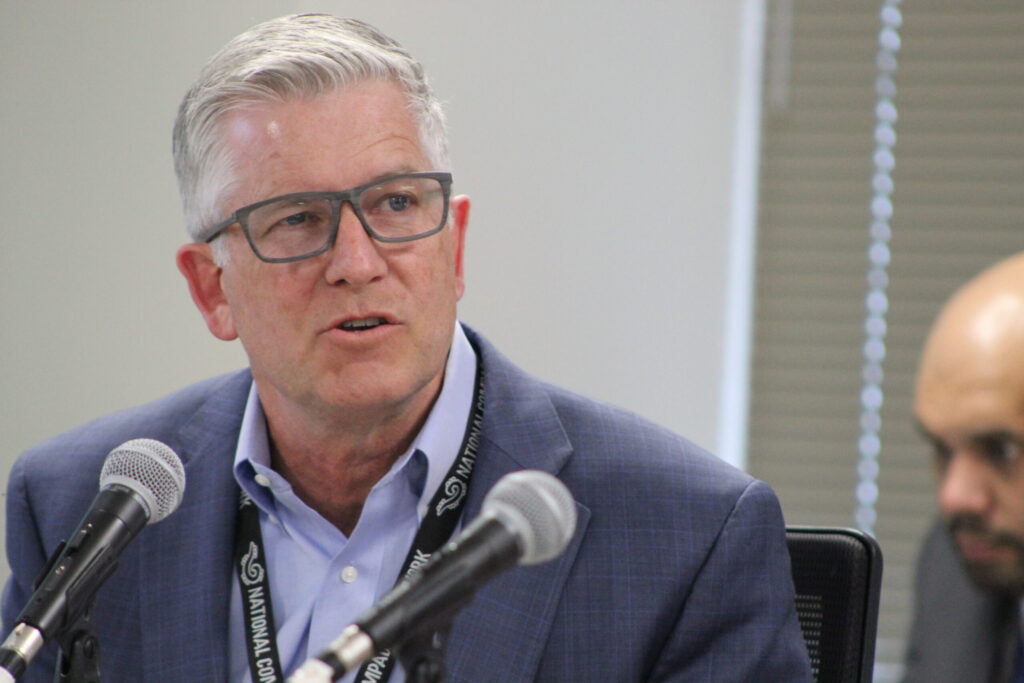A $5 billion tab taxpayers shouldn’t have to cover | NOONAN

Recent events have shaken the nation. Americans want to unite, to rally around. There’s an issue in Colorado that can bring us together, R’s and D’s, because it represents what both R’s and D’s find reprehensible: a taxpayer stiffing.
Here’s the drill based on an exhaustive 2024 report, Rocky Mountain Highs and Lows, produced by Carbon Tracker, “an independent financial think tank that studies the effect of the energy transition on financial markets.”
The energy industry is turning a corner here. Renewable energy is replacing oil and gas. Much of oil and gas production is almost over in the state. While over 80,000 wells are located in every part of Colorado, the Denver-Julesburg (D-J) basin in northeast Colorado and the Piceance in northwest Colorado are mainly what’s left of drilling opportunity.
The peak periods of exploration and drilling are done. Rig count peaked in 2008 at 120, dropped to 4 in 2020, and is back to 17. Since 2011, more than 95% of wells are located in D-J or Piceance fields. Weld and Garfield counties account for the majority of this drilling and production, with Adams, Arapahoe, and Rio Blanco filling in for the top five locations (from Rocky Mountain Highs and Lows by Dwayne Purvis of Purvis Energy Advisors and Carbon Tracker).
Here are the results of this drilling history. The wells in the D-J and Piceance are productive due to horizontal drilling, aka fracking, but these wells lose their high production volume in a couple of years. Most of these wells are now owned by the largest operators in the state: Chevron, Occidental, and Civitas. These corporations off-loaded thousands of their depleted wells to small, usually privately-owned energy operators who now have lots of stripper or completed wells as “assets.” These holes are at their end-of-profitability-life.
According to the Carbon Tracker report, these facts create two tiers of ownership: 1. A relatively small cluster of productive, highly profitable wells owned by the most profitable large corporations, and 2. A large number of low production, low profit wells owned by small, low profit or less companies. It’s the second tier that creates the greatest risk to us taxpayers.
Rocky Mountain Highs and Lows cites these statistics: of 375 oil companies, the bottom 80 percent account for 3.3 percent of active wells and 1.6 percent of production, “including 86 oil companies with no active production to fund the decommissioning of their wells.” The top 10 percent account for 95 percent of production. Of wells owned by these small operators, only 0.4 percent are plugged each year. At this rate, it will take 250 years to decommission the entire list of deep holes.
Until very recently, the COGCC, now the Energy and Carbon Management Commission, assessed minimal bonding requirements to cover plugging and oil well clean-up costs so the energy industry could create jobs, pay severance taxes, and provide the fuel that would keep our state economy humming. A few downers on the way up were the accepted cost.
But then more bad effects occurred. Some of those effects came from unplugged wells and consequent environmental and public health damage. When Democrats gained more control of the legislature, they passed anti-pollution, pro-air and environmental quality legislation. There had to be an accounting for the health and environmental damage as a corollary to drilling. Part of the corollary was an attempt to gin up enough money from the industry to cover plugging costs.
Lucky for the ECMC, the state received money from President Joe Biden’s inflation reduction programs and his infrastructure funding efforts. Some millions of dollars could be used to plug wells. But the money was a drop in the oil and gas barrel compared to the actual cost of fully funding the decommissioning of the state’s wells. Current ECMC drilling application requirements will produce about $1 billion in an account to plug wells, leaving somewhere from $4 billion to $5 billion in need.
This is where our collective public outrage can unite us as we rally to the cause of protecting our personal assets from the $5 billion bill coming our way because traditional oil and gas operators don’t want to pay for cleaning up after themselves. A $5 billion price tag is half the cost of educating our public school children in k-12 for a year. It could jump start a universal health care program.
That’s not a $5 billion tab that we taxpayers should have to cover. Let’s unite to plug every completed oil and gas well within ten years. And let’s rally to ensure the bill is paid by the companies that dug the holes as well as the companies who currently own the holes.










